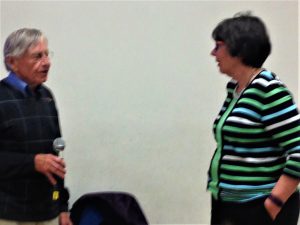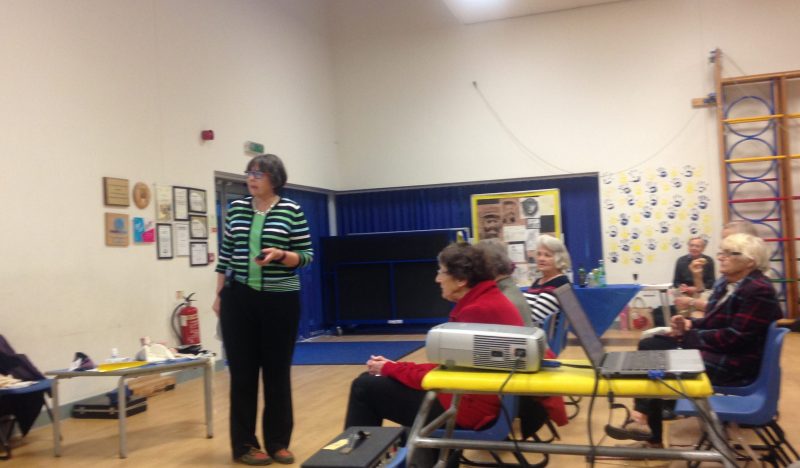The Patient Participation Groups (PPG) from Ferry Road Health Centre and Rye Medical Centre held one of their regular joint Healthy Living Events on September 27 at the Rye Community Primary School. Paula Riley, Senior Lecturer in Podiatry at Brighton University, was welcomed by Tony Moore, vice chairman of the Ferry Road PPG. Riley explained to those in the audience confused by the names “podiatry” and “chiropody” that both are titles protected by the Health and Care Professions Council, but that podiatry is now in more regular use, as it fits the title in other countries and the United States.

Podiatrists undertake a three year degree course, the primary aim of the profession being to improve the mobility, independence and quality of life for their patients. They are autonomous practitioners, employed in the National Health Service (NHS) and as private practitioners. Referral to an NHS practitioner is done through the local GP, and this requires certain criteria to be fulfilled. Private practitioners can be contacted directly by the patient, who should first check with the Health and Care Professions Council to see that the podiatrist is registered.
Riley then took a very interested audience of about thirty people through some facts and figures: A moderately active person takes about 7,500 steps a day, though “fitbit” and similar new devices suggest 10,000 as a minimum. By the time someone reaches 80 years, they will have walked the equivalent of four times round the world – some 216,262,500 steps. Some of the audience members agreed that it felt just like that!
Riley wanted everyone to pay more attention to their feet. Feet are a long way from the heart, she pointed out, and need to be looked after, not hidden in shoes and only seen out in summer. She then went on to explain the most important factors in keeping good foot heath from new born to the older person. Her main messages were that baby feet are not a replica of adult feet and should never be constricted by shoes or socks. Four million children are not wearing the correct size shoes, apparently and because their feet are soft, don’t feel the pain like adults.
She continued through the life of the foot, with a series of illustrative slides that were undoubtedly descriptive, recognised by a number of audience members but rather off putting to see! They really highlighted her first points, look after your feet! Sadly as one grows older, nails thicken, skin becomes more fragile and muscle strength lessens. Riley explained that arch height, nail problems, shoe design and obesity all have impacts on the shape of foot and toes and can affect knees, hips and back. Systemic diseases also play their part, reducing blood flow, most especially in diabetes. Rheumatoid arthritis was a great problem, because of the foot deformities, but new drugs are now influencing this for the better. The audience chipped in with questions and it was felt to have been a really useful session.
Finally, Riley recommended local health walks, for example, one from Rye Harbour at 10:15am each Wednesday and a member of the audience mentioned one that meets on a Monday at 10am at Gibbet Marsh Car Park, Udimore Road, Rye. Overall, the message, from a client of Age Concern was “Keep active. While your legs are moving get out on them!”
Photos: Gillian Roder



